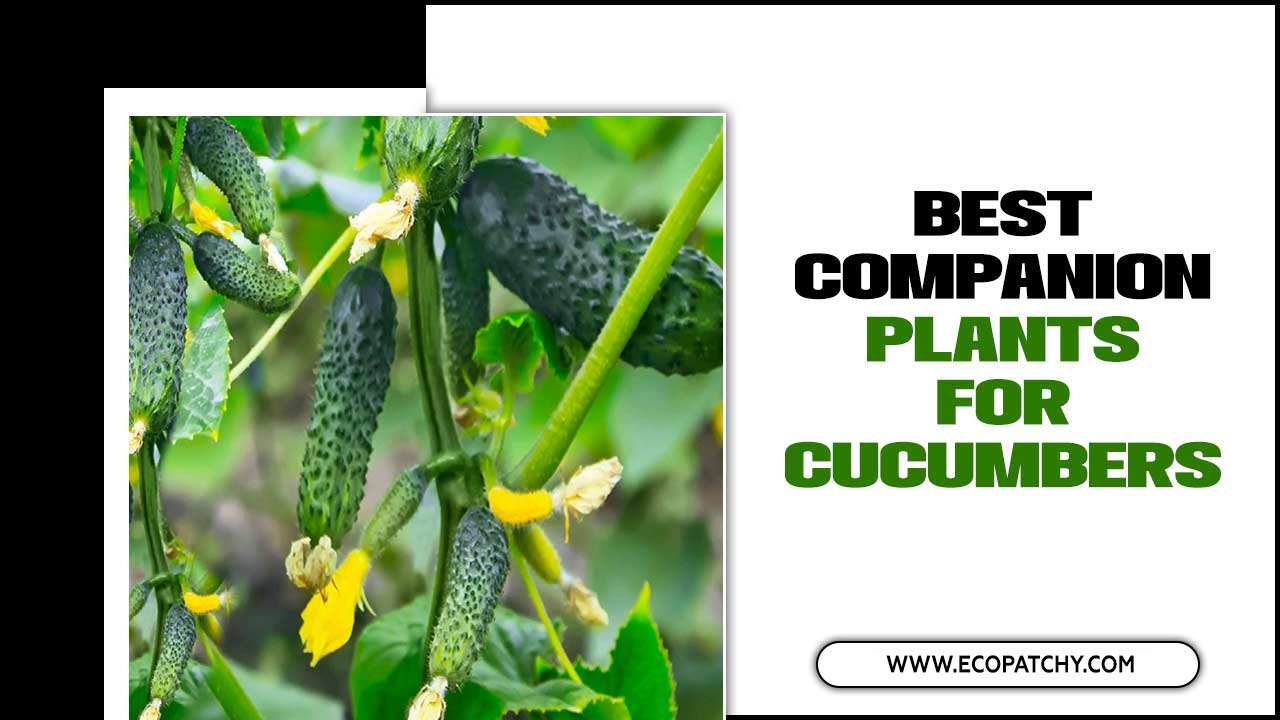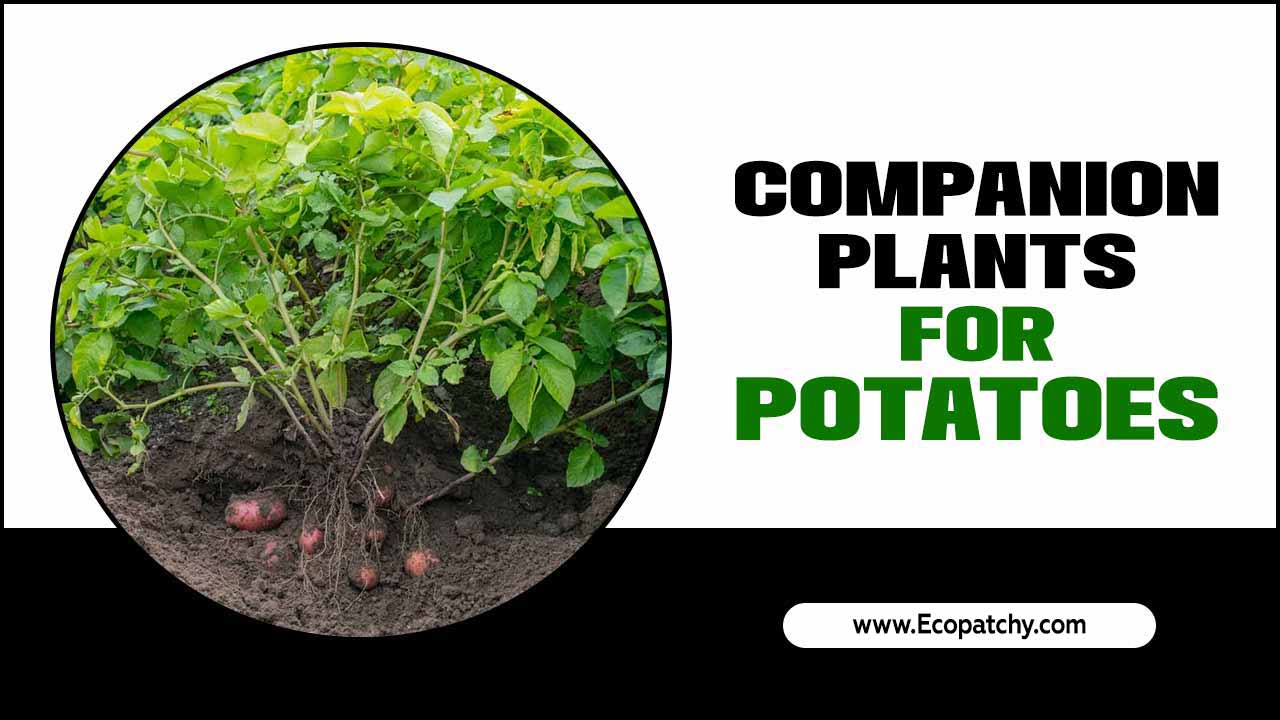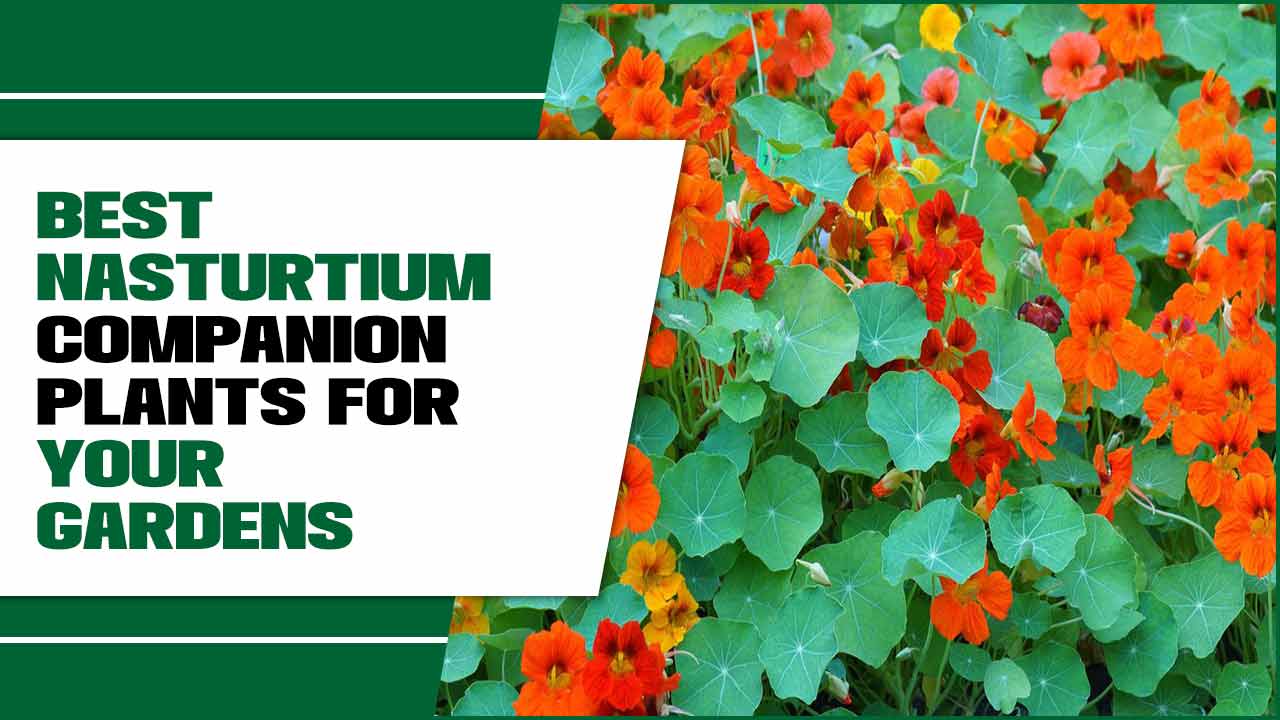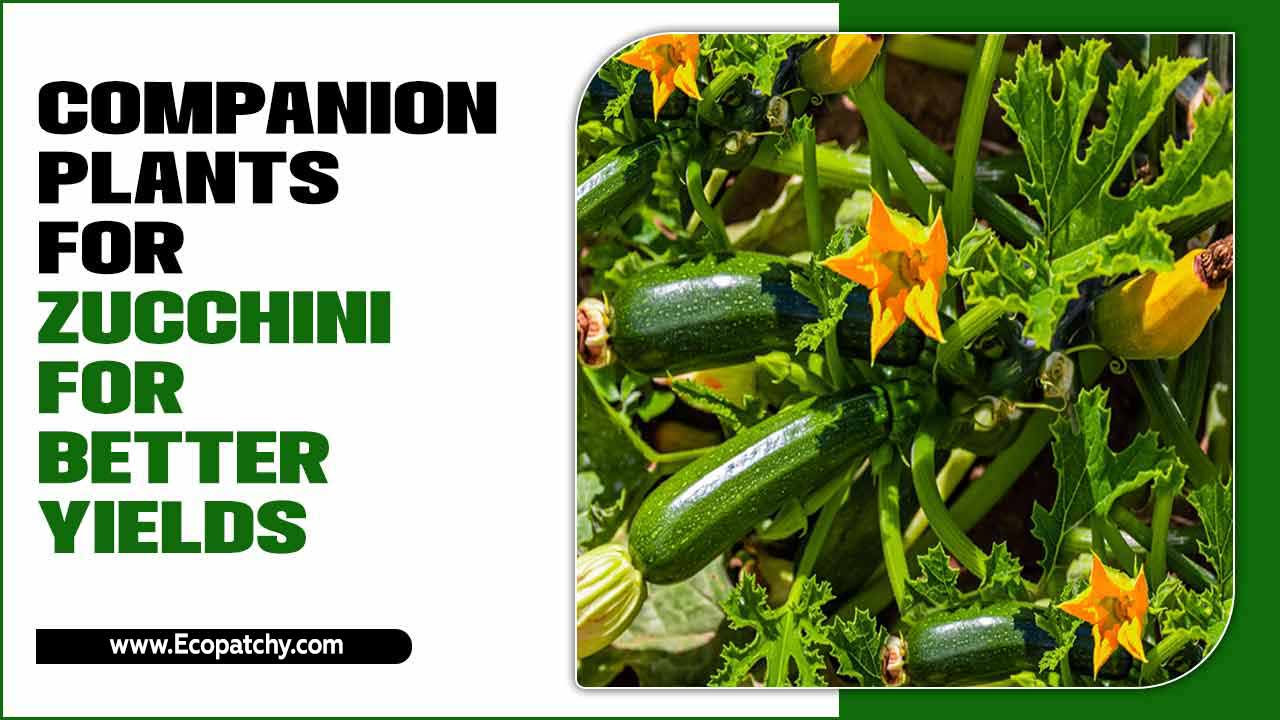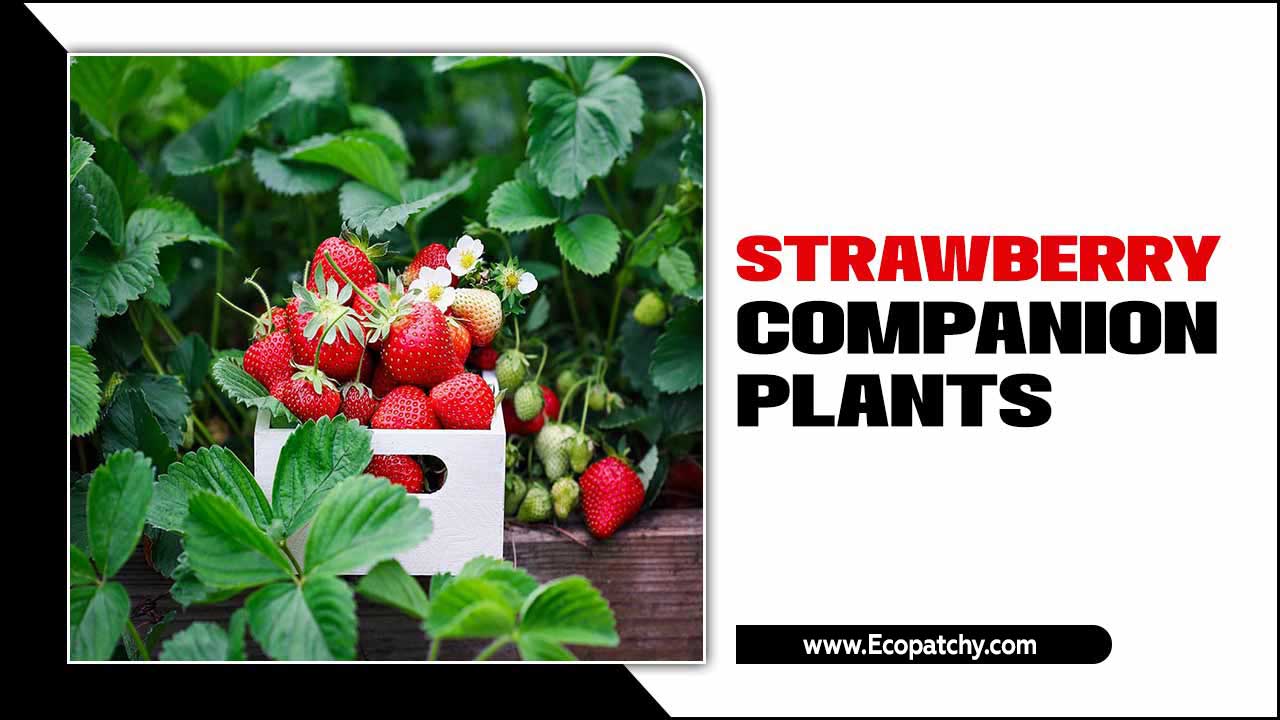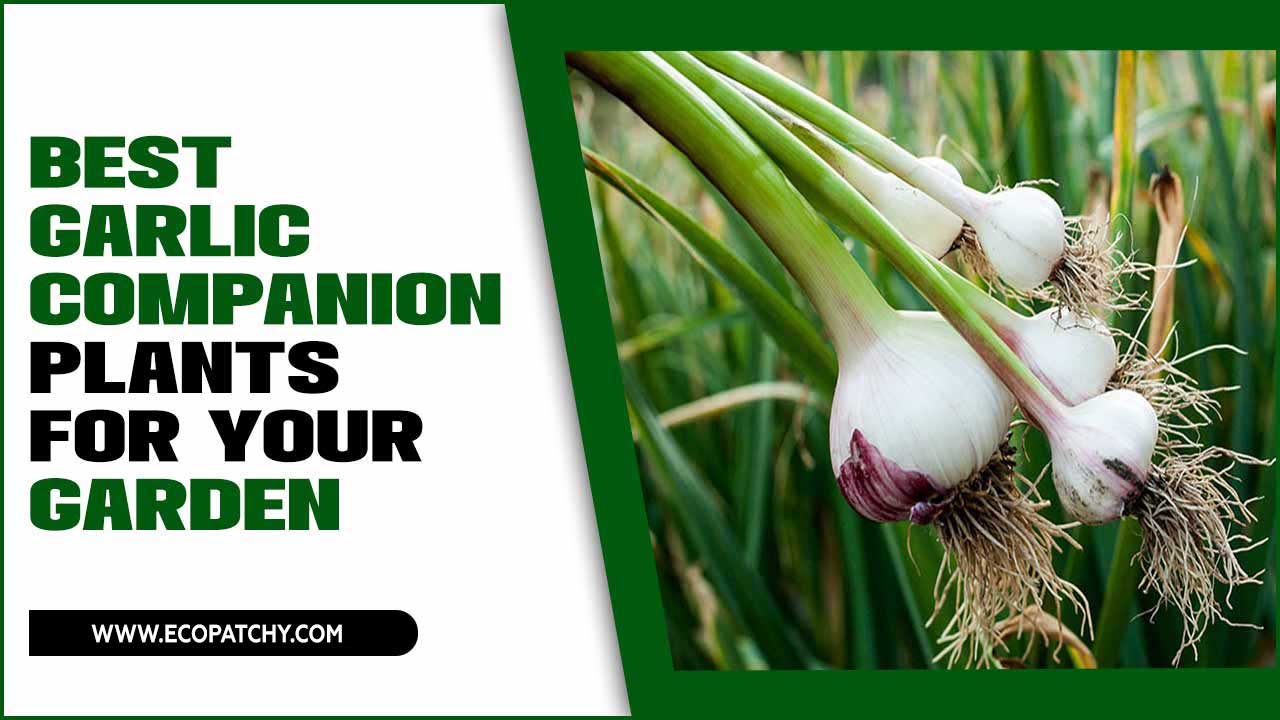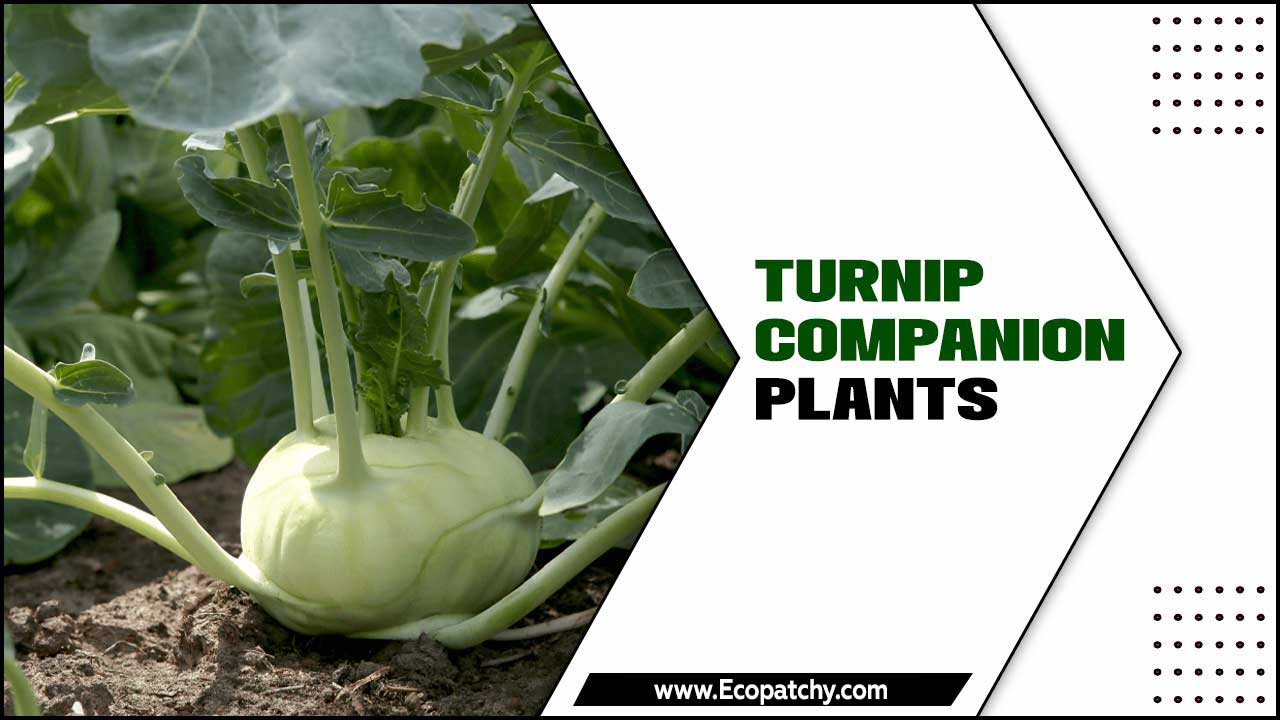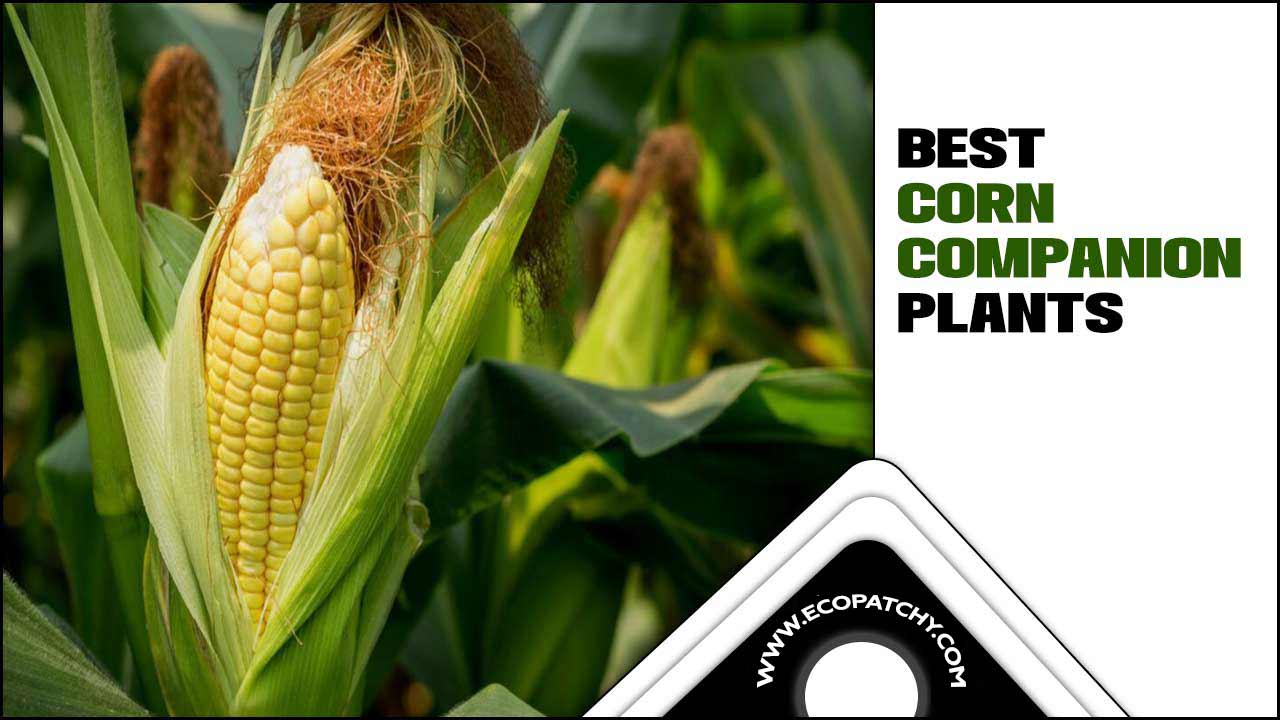As more people turn to gardening to relax and connect with nature, the popularity of growing sweet potatoes has increased. Not only are these tuberous vegetables delicious and versatile in the kitchen, but they also offer numerous health benefits.
However, like any plant, sweet potatoes can benefit from the support and protection of companion plants. Here, we will discuss the importance of companion planting for sweet potatoes and reveal the top 20 best sweet potato companion plants. From herbs to flowers to root crops, we have got you covered.
We also explain what to avoid when selecting companion plants and provide tips on successfully implementing companion planting in your garden. And, if you are wondering whether companion planting can boost sweet potato yield—read on!
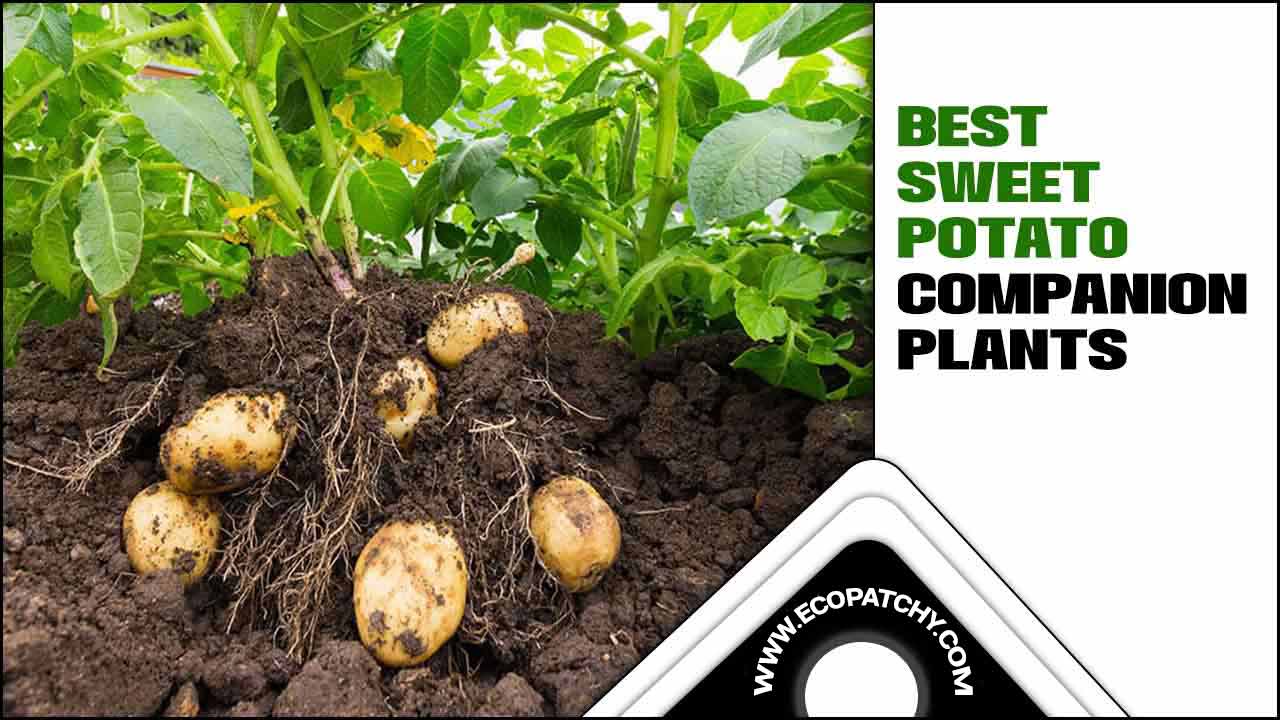
About Companion Planting
Companion planting is a strategic gardening technique that involves planting different crops together to promote natural pest control, improved nutrient uptake, and enhanced plant growth. Certain plant species can provide physical support, attract pollinators, or repel pests through companion planting.
To successfully implement companion planting, knowing about plant compatibility and mutual benefits is important. This age-old practice harnesses nature’s mechanisms to create thriving and harmonious gardens, allowing plants to sequester nitrogen and enhance soil biomass. It is one of the most interesting examples of utilizing plant relationships to achieve healthy growth and a good harvest.
The Importance Of Companion Planting For Sweet Potatoes
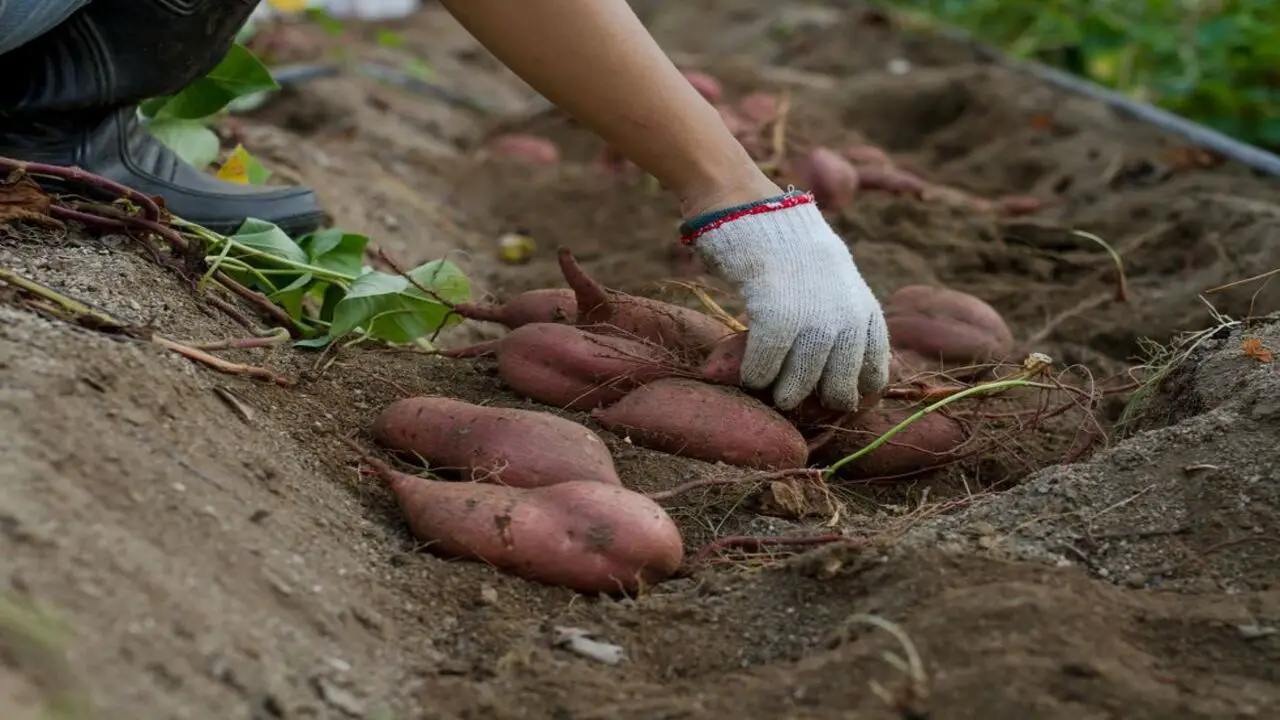
Companion planting is crucial for sweet potatoes, enhancing nutrient uptake and deterring pests. Choosing suitable companion plants can create a thriving garden ecosystem where sweet potatoes and companion plants benefit from each other’s growth. This promotes soil fertility and ensures a healthy harvest.
Some good sweet potato companion plants include summer savory and pole beans, which sequester nitrogen and provide a good ground cover. Additionally, planting marigolds nearby can help protect sweet potatoes from destructive pests like sweet potato flea beetles. Choosing the right companions for your sweet potato garden is essential for a successful and bountiful harvest.
Enhanced Nutrient Uptake
Companion planting can greatly enhance the nutrient uptake of sweet potatoes. Planting them alongside nitrogen-fixing plants enriches the soil with essential nutrients. Additionally, certain companion plants attract beneficial insects that contribute to soil health.
Deep-rooted companion plants allow sweet potatoes to access nutrients at different soil depths, ensuring they receive a well-rounded supply of essential elements. Furthermore, the sprawling vines of sweet potatoes provide ground cover, reducing soil erosion and improving moisture retention. All of these factors work together to promote enhanced nutrient uptake and contribute to the overall health and productivity of the sweet potato garden.
Pest Deterrence
Growing sweet potatoes with specific companion plants can naturally deter common pests. Companion plants like marigolds and yarrow flowers emit aromatic compounds that mask the scent of sweet potato plants, effectively deterring pests.
These companion plants also attract predatory insects that feed on sweet potato pests, reducing infestations. Additionally, companion plants can confuse and distract pests, redirecting their attention away from sweet potatoes. Incorporating these good sweet potato companion plants into your vegetable garden creates a healthier and more pest-resistant environment for your sweet potato plants.
Mutual Growth Benefits
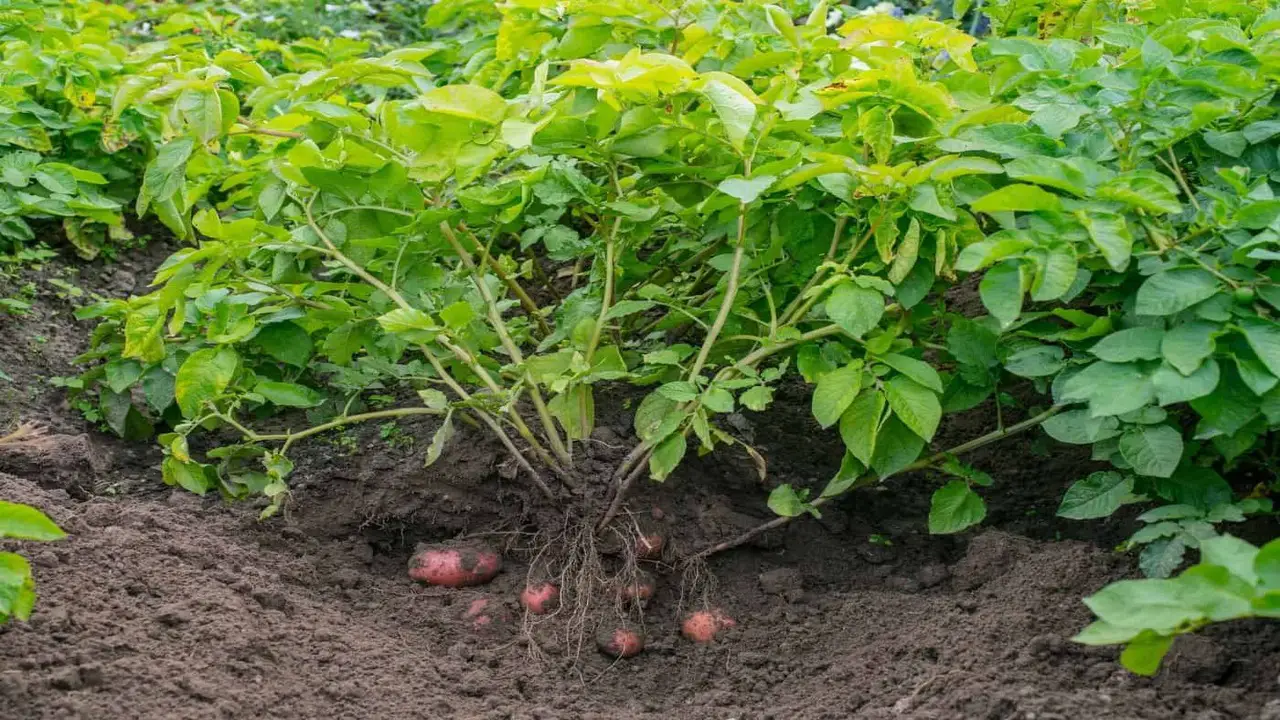
Companion plants play a crucial role in the mutual growth benefits of sweet potatoes. Some companion plants release chemicals stimulating sweet potato growth, leading to healthier and more robust vines. Additionally, companion plants with similar growth habits provide shade and support for sweet potato vines, creating an ideal environment for their growth.
Creeping varieties of companion plants also act as living mulch, suppressing weeds around sweet potatoes and reducing competition for resources. This diverse ecosystem created by companion plants leads to healthier growth and higher yields for sweet potatoes and other plants.
The Top 20 Best Sweet Potato Companion Plants
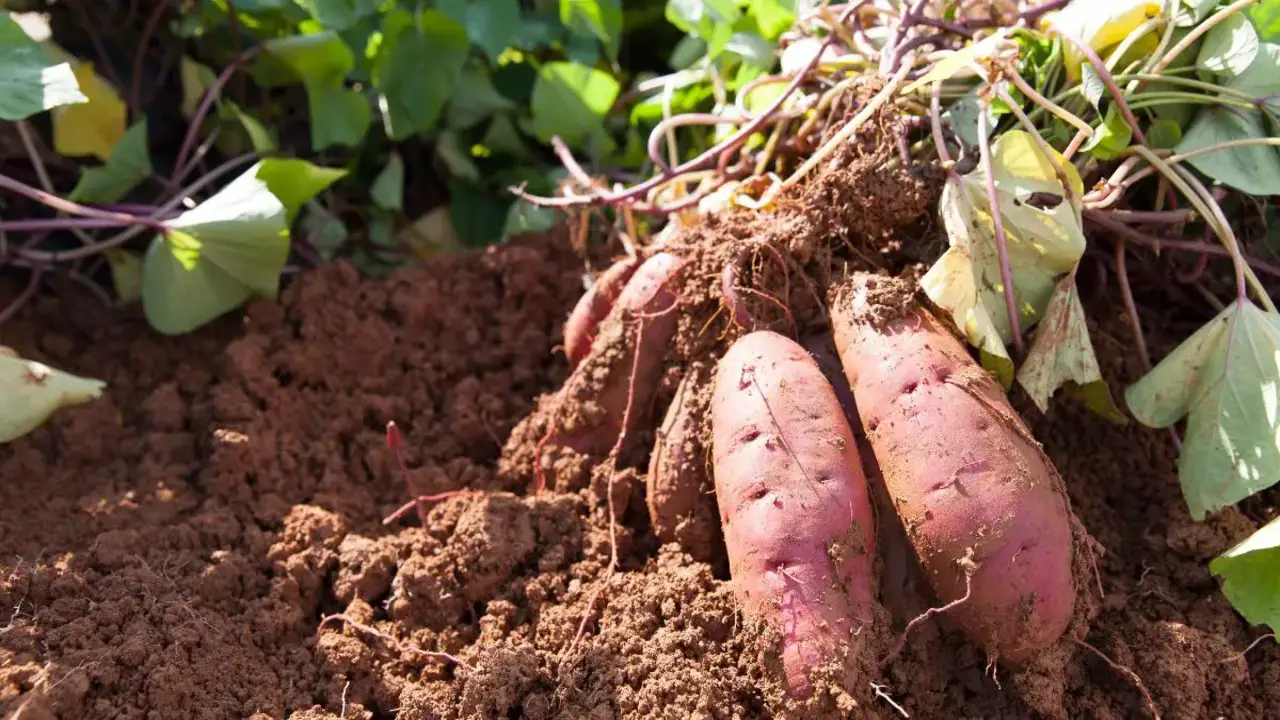
When growing sweet potatoes, choosing the right companion plants can help promote healthy growth and maximize yields. When planning your sweet potato garden, consider incorporating companion plants that provide multiple benefits. Marigolds help repel pests and improve soil health, while nasturtiums attract beneficial insects and add color to your garden.
These are just a few companion plants that can benefit your sweet potato crop. By planting these alongside your sweet potatoes, you can create a more harmonious garden ecosystem and improve the overall health of your plants. Some of the top 20 best sweet potato companion plants:
1.Herbs
Planting herbs like basil and thyme with sweet potatoes can enhance the sweet tubers’ flavor while repelling pests. Herbs like rosemary and oregano release aromatic compounds that deter sweet potato flea beetles and other destructive pests.
Companion planting sweet potatoes with herbs offers a wide range of culinary possibilities and attracts pollinators, benefiting the garden’s overall health. Some herbs have medicinal properties that can contribute to the garden’s well-being. Incorporating herbs into your sweet potato garden creates a harmonious and diverse ecosystem that promotes healthy growth and a good harvest.
2.Alliums
Alliums, such as onions and garlic, are an excellent choice as companion plants for sweet potatoes. You can effectively deter pests by planting alliums near your sweet potato garden. The strong scent of alliums can mask the smell of sweet potatoes, reducing the attraction of destructive pests like sweet potato flea beetles and bean weevils.
Additionally, alliums add a pop of color to your garden with their vibrant blooms, making them practical and visually appealing. Their beautiful and fragrant presence adds to the overall aesthetics of your vegetable garden.
3.Marigolds

Regarding companion planting for sweet potatoes, marigolds are an excellent choice. These vibrant flowers not only add a bright and cheerful touch to your garden, but they also serve several beneficial purposes. Planting marigolds near sweet potatoes can help repel pests and attract beneficial insects, creating a healthier environment for your sweet potato plants.
The scent of marigolds acts as a natural deterrent, keeping pests at bay and protecting your sweet potato plants from potential damage. In addition, marigolds are easy to grow and require minimal maintenance, making them a convenient choice for any gardener. So why not add a splash of color and pest protection to your sweet potato garden with marigolds?
4.Radishes
Radishes make excellent companion plants for sweet potatoes. By planting radishes near your sweet potato plants, you can improve the health of the soil. These root vegetables act as a natural ground cover, preventing weed growth around the sweet potatoes.
Radishes have a shallow root system that complements the deep roots of sweet potatoes, making them a perfect match. Another benefit of planting radishes alongside sweet potatoes is that they can be harvested quickly, allowing you to enjoy an early harvest before the sweet potatoes are ready.
5.Alyssum
Alyssum is a beneficial companion plant for sweet potatoes, attracting predatory wasps and other beneficial insects. Its delicate flowers add fragrance and beauty to your garden, creating a carpet-like effect around the sweet potato plants.
Alyssum requires little growing space, making it an ideal choice for smaller gardens. You can enhance their overall growth and health by planting alyssum near your sweet potato plants. Its low-maintenance nature makes it easy to care for, and its presence in the garden will be a bonus to your sweet potato harvest.
6.Legumes

Legumes, such as bush beans, are excellent companion plants for sweet potatoes. They can improve soil fertility in your vegetable garden thanks to their ability to sequester nitrogen. By planting legumes near your sweet potato garden, you provide a natural source of nitrogen that promotes healthy growth and a good harvest of sweet tubers.
Furthermore, legumes can act as a trap crop, diverting destructive pests like sweet potato flea beetles and bean weevils away from your precious sweet potatoes. Harvesting legumes also adds diversity and delicious fresh produce to your garden.
7.Nasturtium
Nasturtium, a fantastic companion plant for sweet potatoes, offers numerous benefits. Planting nasturtium near sweet potatoes helps deter pests like flea beetles, ensuring the health of your sweet potato garden. With its vibrant flowers, nasturtium adds a beautiful splash of color to your vegetable garden.
The peppery taste of nasturtium leaves repels insects from sweet potato plants, promoting their healthy growth. Nasturtium is an easy-to-grow plant that thrives in both sun and partial shade, making it a versatile addition to your garden. Utilize the natural properties of nasturtium to enhance the growth and protection of your sweet potatoes.
8.Yarrow
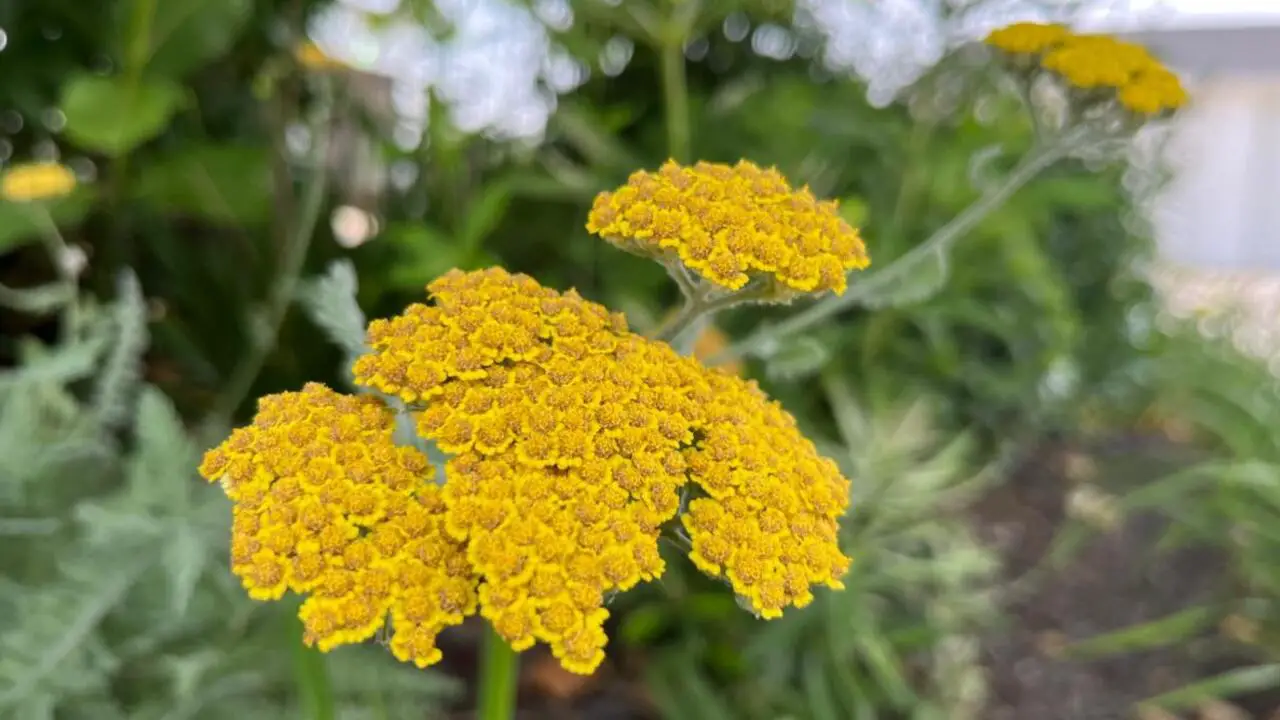
Yarrow is a great companion plant for sweet potatoes. It attracts beneficial insects like predatory wasps, which can help control pests in your garden. With its beautiful flowers, yarrow adds visual appeal to your garden while repelling pests with its aromatic properties.
Yarrow is a hardy plant that requires minimal care and can tolerate various soil conditions. By planting yarrows near your sweet potatoes, you create a visually stunning garden and enhance your sweet potato plants’ overall health and pest resistance.
9.Spinach
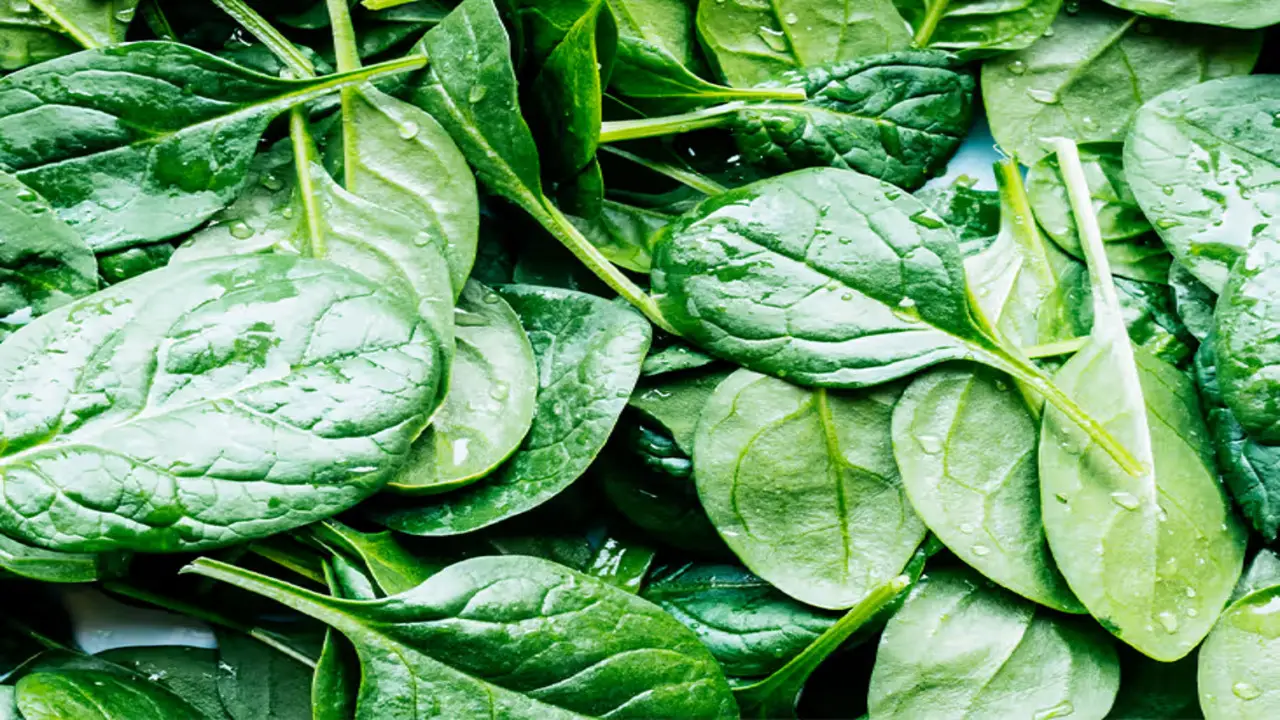
Spinach makes a great companion plant for sweet potatoes. Planting spinach near sweet potatoes can provide shade and reduce soil erosion. Plus, spinach adds a nutritious leafy green to your garden that can be continuously harvested throughout the season.
The dense foliage of spinach also helps suppress weed growth around sweet potato plants. Additionally, spinach is a cool-season crop, making it a perfect match for early spring or fall planting alongside sweet potatoes. Incorporating spinach into your sweet potato garden enhances soil biomass and promotes healthy growth and a good harvest.
10.Greens
Greens, such as kale or collard greens, make excellent companion plants for sweet potatoes. By planting them near your sweet potato garden, you can introduce a delightful contrast in texture and color. Greens offer a nutritious addition to your vegetable garden, and their leafy foliage also provides valuable benefits.
They help shade the soil, reducing moisture loss and suppressing weed growth. Furthermore, greens are cool-season crops that can be planted alongside sweet potatoes in early spring or fall, making them a perfect match for your sweet tubers.
11.Root Crops
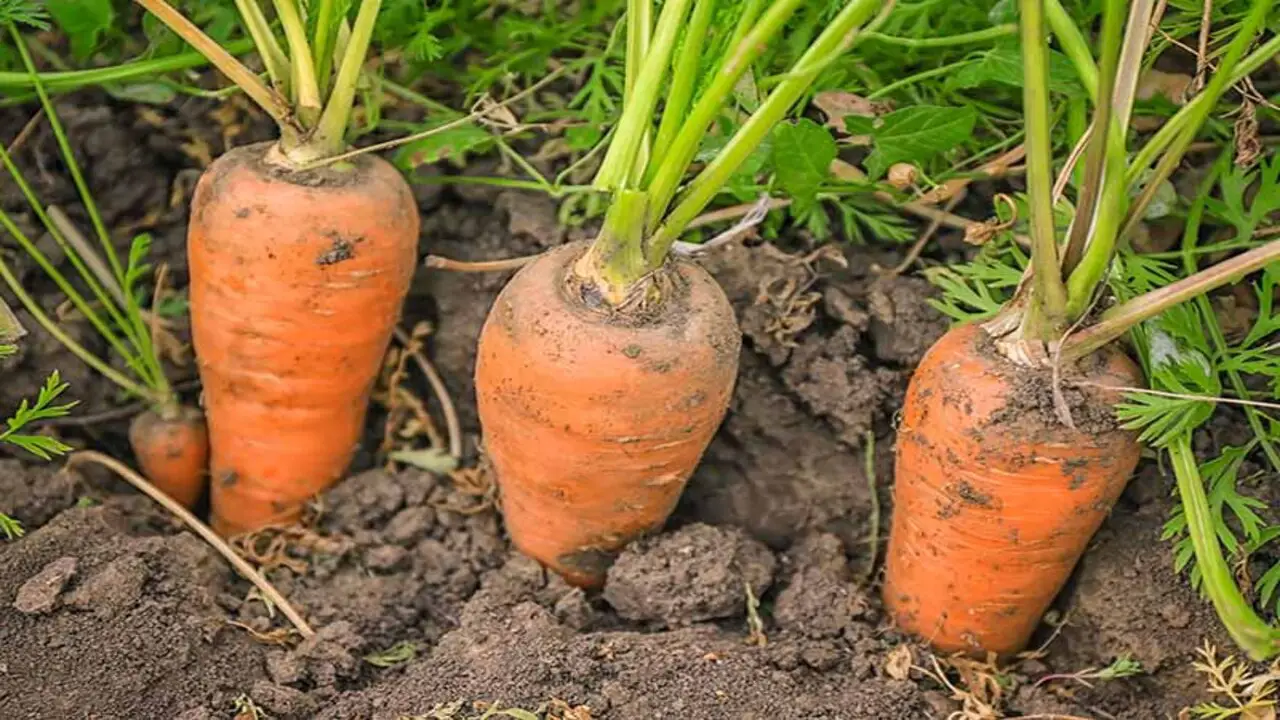
Root crops, such as carrots or beets, are excellent companion plants for sweet potatoes in your vegetable garden. Planting root crops alongside sweet potatoes not only maximizes space but also takes advantage of their deep root systems, which complement the shallow root system of sweet potatoes.
This allows for efficient use of soil nutrients, promoting healthy growth for both plant species. Additionally, root crops add a variety of flavors and colors to your garden, resulting in a diverse harvest. So, consider including these good sweet potato companion plants when planning your garden to make the most out of your space and boost your harvest.
12.Flowers

Flowering plants make beautiful and colorful companions for sweet potatoes. You can attract beneficial insects to your garden by planting flowers near sweet potatoes, helping with pollination and pest control. Marigolds and yarrows are both suitable companion flowers for sweet potatoes.
These flowers not only add aesthetic appeal but they also provide pollination support to sweet potato vines. Interplanting sweet potatoes with flowers can create a visually pleasing and biodiverse garden, enhancing your sweet potato garden’s overall beauty and health.
13.Shade-Bearing Plants
Shade-loving plants are excellent companions for sweet potatoes, offering protection from intense sunlight. Lettuce and spinach are ideal shade-bearing plants that pair well with sweet potatoes. By planting them together, you efficiently use garden space and resources.
The sprawling vines of sweet potatoes create a natural shade canopy, providing a perfect microclimate for shade-loving plants. This combination maximizes the overall growth and productivity of both crops. It’s an innovative way to optimize your sweet potato garden, promoting healthy growth and a bountiful harvest.
14.Basil
Basil is a valuable addition to any sweet potato garden. It not only enhances the flavor of sweet potatoes but also acts as a natural pest repellent. Planting basil near sweet potatoes can deter common pests like spider mites and flea beetles. The aromatic oils released by basil help mask the scent of sweet potatoes, making them less attractive to pests. Moreover, growing basil alongside sweet potatoes adds culinary variety to your garden and promotes biodiversity. Together, basil and sweet potatoes create a vibrant and fragrant garden space.
15.Thyme
With its ability to repel pests and improve soil health, Thyme is a suitable companion plant for sweet potatoes. By planting thyme near sweet potatoes, you can effectively deter pests like potato beetles and weevils. The strong aroma of thyme is a natural deterrent while adding a pleasant fragrance to your garden. Additionally, thyme’s deep root system enhances soil structure and prevents erosion in sweet potato beds. Combining thyme with sweet potatoes creates an aromatic and resilient garden ecosystem.
16.Aromatic Herbs
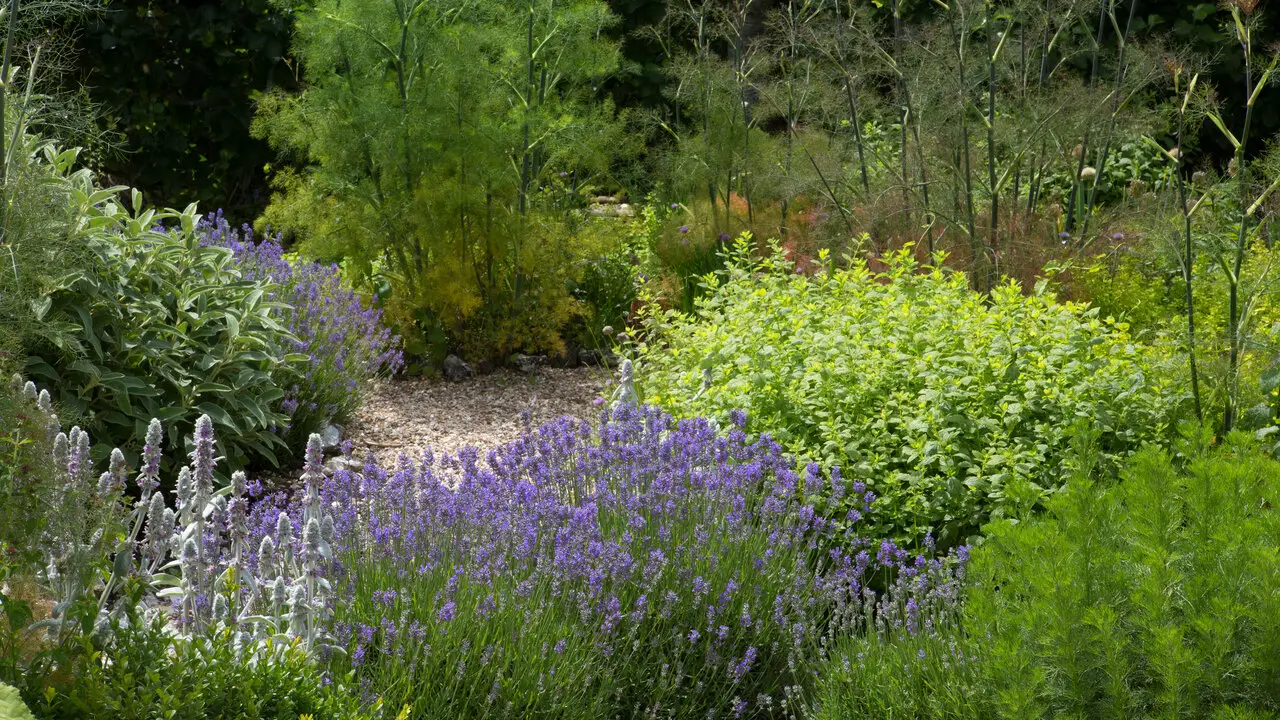
Aromatic herbs like rosemary and oregano offer multiple benefits as companion plants for sweet potatoes. By planting these herbs near sweet potato plants, you can effectively repel pests such as flea beetles and aphids that can cause damage. The strong scents emitted by these herbs act as a natural deterrent, masking the odor of sweet potatoes and making them less attractive to pests.
Additionally, aromatic herbs bring culinary value and diversity to your garden while promoting a balanced ecosystem. Creating a fragrant and pest-resistant garden space by combining aromatic herbs with sweet potatoes is an excellent way to enhance your gardening experience.
17.Tomatoes
Tomatoes and sweet potatoes make compatible companions in the garden, as they share similar growth habits and nutrient requirements. Interplanting tomatoes with sweet potatoes can maximize space utilization and yield in vegetable gardens.
The sprawling vines of sweet potatoes act as natural ground cover, suppressing weed growth around tomato plants. Furthermore, the shade provided by the sweet potato vines offers protection to the tomatoes, creating a symbiotic relationship between the two plant species. Together, they create a visually appealing garden and promote healthy growth and a bountiful harvest.
18.Peppers
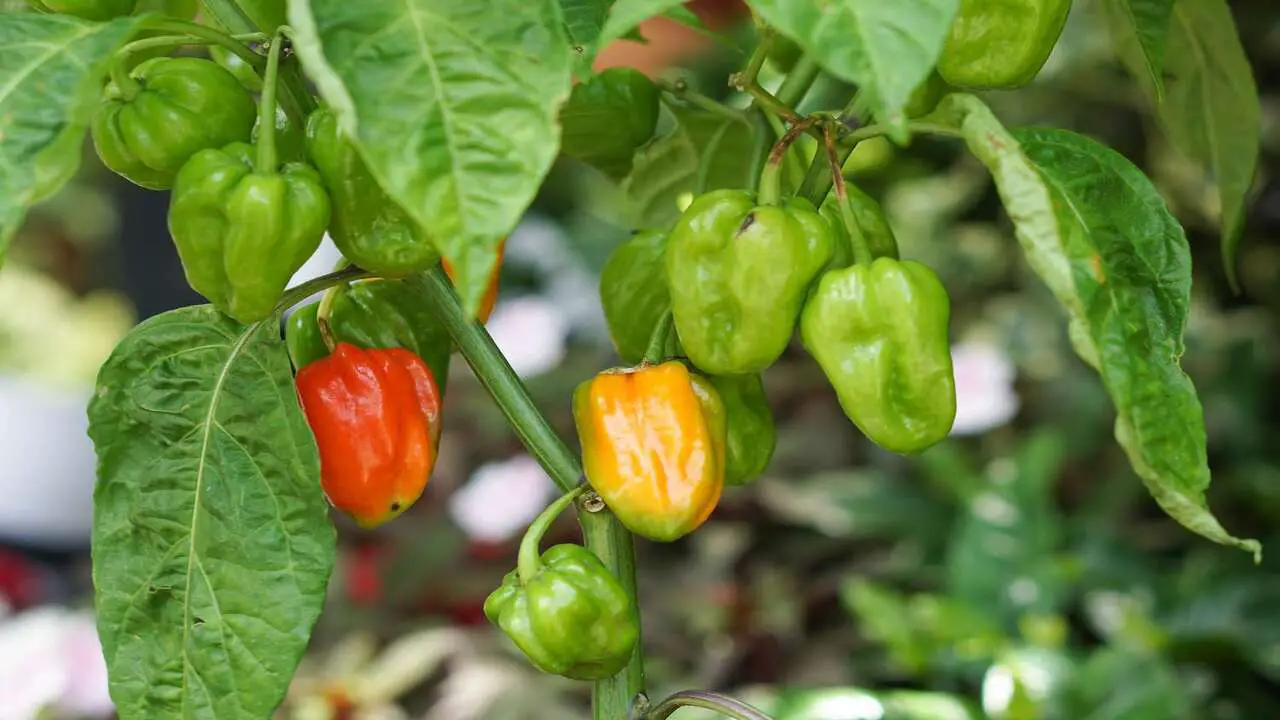
Peppers and sweet potatoes make excellent companions in the garden. They share similar growing conditions and are resistant to common pests. You can maximize your garden space and promote efficient resource sharing by interplanting peppers with sweet potatoes.
The strong scent of peppers also helps deter pests like flea beetles that can damage sweet potatoes. Combining peppers and sweet potatoes adds variety and flavor to your garden harvest, creating a vibrant and fruitful garden space. Peppers are a great addition to your sweet potato garden for their mutual growth benefits and ability to repel pests.
19.Cucumbers
Cucumbers and sweet potatoes are ideal companions in the garden due to their similar water and nutrient requirements. You can optimize yield and minimize resource competition by interplanting these two plant species. One of the benefits of growing cucumbers alongside sweet potatoes is that the sprawling vines of sweet potatoes act as natural ground cover, protecting cucumber plants from soil erosion.
Additionally, the shade provided by the sweet potato vines during the hot summer months can benefit the cucumber plants. This combination creates a visually appealing garden space and promotes a productive and healthy growth environment.
20.Squash
Squash is a great companion plant for sweet potatoes, as they share similar growth habits and pest resistance. You can maximize your garden space and promote efficient resource sharing by interplanting squash with sweet potatoes.
The sprawling vines of the sweet potatoes also act as a natural ground cover, reducing weed growth around the squash plants. Additionally, the shade provided by the sweet potato vines during the hot summer months can benefit the squash plants. Not only does growing squash alongside sweet potatoes create a visually appealing garden, but it also leads to a bountiful harvest.
What To Avoid When Selecting Sweet Potato Companion Plants?
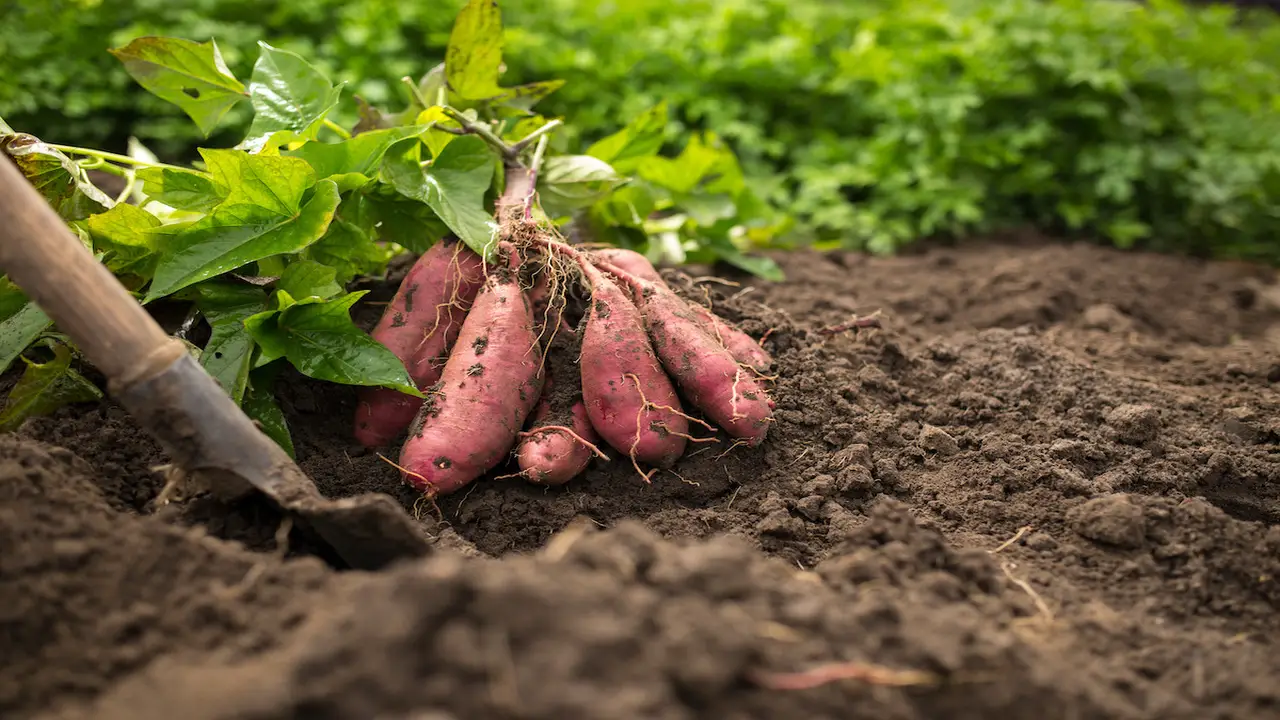
When selecting companion plants for sweet potatoes, it is important to avoid certain types of plants that can hinder their growth and development. One plant to avoid is vine or climbing, as they can compete with sweet potatoes for sunlight and nutrients.
Additionally, plants that require heavy watering or have shallow roots should also be avoided, as they can cause the soil to become too moist and lead to the rotting of the sweet potato tubers. It is best to choose companion plants with similar water and nutrient requirements to ensure healthy growth for the sweet potatoes and their companions. Some recommended companion plants for sweet potatoes include beans, corn, and leafy greens like spinach or lettuce.
How To Successfully Implement Companion Planting?
Implementing companion planting can be a successful strategy for growing sweet potatoes. By selecting the right companion plants, you can enhance the growth and health of your sweet potato crop. Some popular companion plants for sweet potatoes include:
- Beans: Beans have nitrogen-fixing abilities, which can help improve soil fertility for sweet potatoes.
- Marigolds: Marigolds repel pests such as nematodes and can help deter insect damage to sweet potatoes.
- Oregano: Oregano has natural fungicidal properties and can help prevent diseases in sweet potatoes.
- Spinach: Spinach is a good companion plant because it provides shade to the sweet potato vines and helps conserve moisture in the soil.
When implementing companion planting, it is important to consider the specific needs of each plant and ensure that they are compatible with each other. By strategically choosing companion plants, you can create a thriving ecosystem in your garden and maximize the growth potential of your sweet potato crop.
Can Companion Planting Boost Sweet Potato Yield?
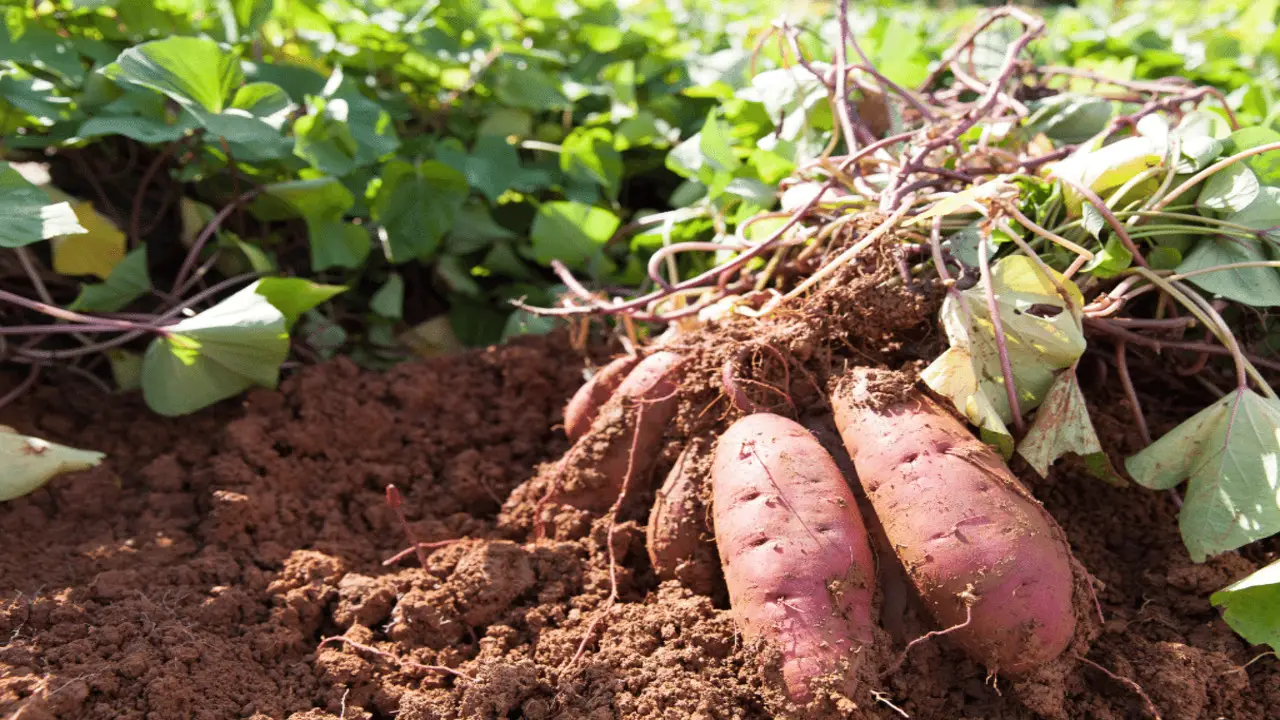
Companion planting can indeed boost sweet potato yield. By strategically planting certain plants alongside sweet potatoes, you can create a mutually beneficial relationship that enhances growth and productivity. Some popular companion plants for sweet potatoes include beans, corn, and kale.
Beans add nitrogen to the soil, essential for healthy plant growth. Corn provides shade and support for the sprawling sweet potato vines. Kale helps deter pests and acts as a natural mulch, reducing weed growth and conserving moisture in the soil. Incorporating these companion plants into your sweet potato garden allows you to maximize your yield and enjoy a bountiful harvest.
Conclusion
Companion planting is a valuable technique for maximizing the growth and yield of sweet potatoes. Selecting the right companion plants can enhance nutrient uptake, deter pests, and promote mutual growth benefits. The top 20 best companion plants for sweet potatoes include herbs, alliums, marigolds, radishes, and legumes. However, it’s important to avoid certain plants that may compete for resources or inhibit sweet potato growth.
To successfully implement companion planting, consider factors such as spacing, sunlight requirements, and soil compatibility. While companion planting can boost sweet potato yield, it should be combined with proper care and maintenance practices. We hope you know the best sweet potato companion plants.
Frequently Asked Questions
1.What Should You Not Plant Near Potatoes?
Ans: When planting potatoes, knowing what not to plant nearby is important. Avoid tomatoes, peppers, and eggplants, as they are susceptible to the same pests and diseases. Other root vegetables like carrots and beets should also be kept away. Opt for companion plants like beans, peas, corn, marigolds, and garlic instead.
2.What Can You Plant With Yams?
Ans: Yams thrive when planted alongside compatible companions like beans, peas, and corn. Other beneficial options include okra, peanuts, and cowpeas. These plants enhance soil fertility and help suppress weeds around the yam plant. It’s important to select companions with similar water and sunlight needs.
3.Can You Plant Basil With Sweet Potatoes?
Ans: Yes, basil is an excellent companion plant for sweet potatoes. It helps repel pests and attracts beneficial insects to your garden. Planting basil near sweet potatoes can improve the soil’s health and enhance both plants’ flavor. Other good companion plants for sweet potatoes include beans, peas, and marigolds.
4.Why Are They Excellent Companion Plants For Sweet Potatoes?
Ans: Companion plants for sweet potatoes are excellent because they improve soil quality by fixing nitrogen. They also act as natural pest repellents or attract beneficial insects. Some companion plants, like beans and peas, have shallow roots that don’t compete with sweet potatoes for nutrients.

